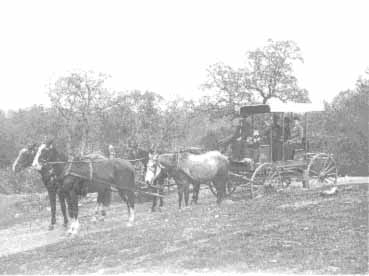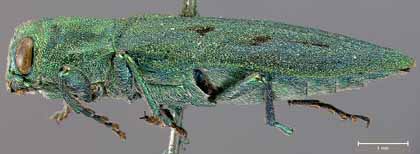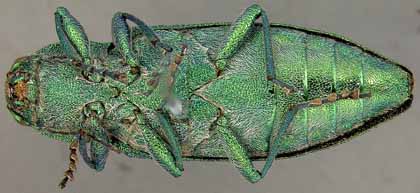Appendix
1. Biography R. Hopping
2. Further resources of information on Hopping
3. In response to a request for information
4. Photos of Ralph Hoping
5. Additional Photos of T. opulenta
Biography R. Hopping
http://www.calacademy.org/research/library/ special/bios/Hopping.htm
Ralph Hopping
Biographical Sketch, by Hany Abdoun, Archives Intern
Ralph Hopping was born on April 8, 1868, in New York City. As young boy he collected and studied insects, specifically Coleoptera, (such as beetles and weevils). He came to California in 1891 along with his father George W. Hopping.
Ralph Hopping entered the United States Forest Service in 1905. In 1912 he held the post of Forest Entomologist, with headquarters in San Francisco. In 1919 he was offered the position of Entomologist in charge of the Vernon Laboratory in British Columbia, Canada. He accepted the post and remained in Vernon until his retirement as a Senior Agricultural Scientist in 1939.
Hopping was a member of many scientific organizations, including the California Academy of Sciences (beginning in 1913) and the Pacific Coast Entomological Society.
Ralph Hopping died on October 29, 1941. In 1948 Hopping's wife, Eltha Edwards, donated his beetle collection to the Entomology Department of the California Academy of Sciences.
Sources Consulted:
Pan Pacific Entomologist, January 1942
Index Cards for the California Academy of Sciences Staff and Members
Further resources of information on Hopping
http://www.calacademy.org/research/library/
special/bios/Hopping.htm
Hopping, Ralph (1868-1941). Papers. 7 boxes, 2.45 cu.ft. Box List. Biography.
Ralph Hopping Collection (Unprocessed) Box List
1. Correspondence
A-B
2. Correspondence C-Fa
3. Correspondence Fe-Ja
4. Correspondence J-L
5. Correspondence M-St
6. Correspondence Sw-Z
7. Miscellaneous data, reports, insect control
In response to a request for information
Email, November 13, 2000
Dear Ward:
I looked through our reprint files and found many papers by Ralph and George Hopping, including two species from Sequoia. Unfortunately, they were described in 1936 and 1947, so they are far newer than the one you are looking for. One looked particularly promising, Cortodera sierrae (Cerambycidae) because the locality is near General Grant Park (holotype) and Giant Forest (allotype), collected in 1911. Interestingly there were no papers by the Hoppings in our files from the early part of the century; are you certain that the date was around 1905? There are some other people that I plan to ask about this. Otherwise, I have no other options that do not involve a major literature search, which I do not have time to do. If I could find out where the Hopping collection was deposited, that institution could probably be of more assistance. Unless it was here!
Cheryl B. Barr
Essig
Museum of Entomology
211 Wellman Hall #3112
University of California
Berkeley, CA 94720
In response to a request for information
Email, July 18, 2002
Subject: Hopping beetle
Dear John:
The only cerambycid described by Hopping from Sequoia NP is Neobellamira
sequoiae (now in Leptura) in1934, Canadian Ent.,66:115-116. This must the beetle in question although he lists only the park as type locality.
I hope this information is helpful.
Regards
Dr. John A. Chemsak
Essig
Museum of Entomology
211 Wellman Hall #3112
University of California
Berkeley, CA 94720
In response to a request for information
Email, March 7, 2003
Dear Mr. Lockhart:
We have some of H. C. Fall's papers and letters, but unfortunately I was unable to find any letters from Ralph Hopping or notes referring to Pleocoma hoppingi. Guess "Beetle Rock" wishes to remain mysterious.
Sorry we are unable to help in this case,
Best regards,
Philip D. Perkins, Ph.D.
Entomology Collections Manager
Museum of Comparative Zoology
Harvard University
In response to a request for information
Email, March 13, 2003
Hi John - the types of P. hoppingi were taken along the trail to Clough Cave in the upper end of the S. Fork of the Kaweah River, Jan and Feb of 1905. They likely aren't the species for which the rock was named, but the paper is in the Entomological News, Dec. 1906, p. 394. As you noted, Ralph Hopping was a prolific collector, and many new species were named from his productions around that time. You probably can pick a beetle and say that it is the one for which the rock was named, and have at least a 50-50 chance of being right. cheers Frank
--
Frank T. Hovore
Frank Hovore & Associates
14734 Sundance Place, Santa Clarita, CA 91387 - 1542 USA
(661) 250 - 8311 phone; (661) 298 - 7579 fax
website: http://www.hovore.com
 |
| Ralph
Hopping driving stage. Sequoia National Park Photographic Collection. |
 |
| T.
opulenta (click to enlarge). An original specimen collected
by Hopping ca. 1906. Photo: Museum of Comparative Zoology, Harvard University. © President and Fellows of Harvard College |
 |
| T.
opulenta (click to enlarge). An original specimen collected
by Hopping ca. 1906. Photo: Museum of Comparative Zoology, Harvard University. © President and Fellows of Harvard College |
Our Founder Questions? Go to About Our New Site |
Masthead
Photo from: |